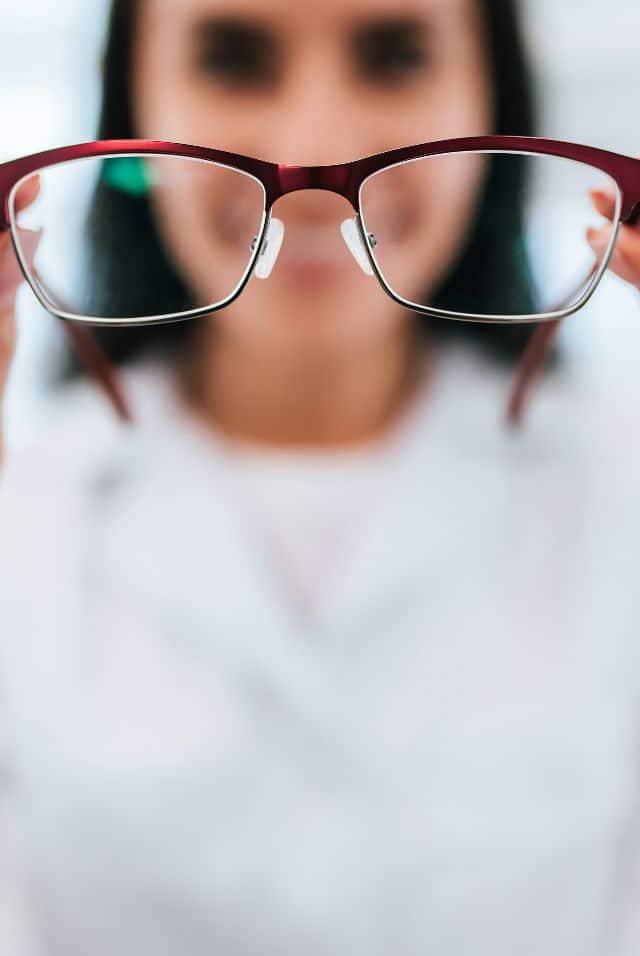Pediatric Ophthalmology – Overview
A pediatric ophthalmologist is a healthcare provider who specializes in diagnosing, treating and preventing eye disorders in children.
So, you may usually have to see a pediatric ophthalmologist if your child’s eyes are not developing normally as early treatment is crucial to restore and maintain good vision.
Pediatric ophthalmologists specialize in diagnosing and treating eye/vision problems in children of all ages, not just those under 12-13.
Though all ophthalmologists are trained to treat children’s eye disorders, pediatric ophthalmologists are more knowledgeable and experienced in diagnosing and treating eye conditions that commonly affect children.
What Does a Pediatric Ophthalmologist Do?

A pediatric ophthalmologist and optometrist are taught and trained to examine children’s eyes, test their vision and prescribe contact lenses or glasses if needed.
Optometrists are eye care professionals who can prescribe glasses and contact lenses and, in some jurisdictions, may also have the authority to prescribe medications for certain eye conditions. Ophthalmologists, on the other hand, are trained to diagnose and treat all disorders and diseases that commonly affect children, especially during their developing stage.
To become a pediatric ophthalmologist, you will first need to attend medical school and then receive additional training in eye care.
Next, you will need to complete additional training in diagnosing and treating eye disorders in children. The total education and training time to become a pediatric ophthalmologist can vary, but it typically includes:
- At least 4 years of medical school,
- A 1-year internship,
- 3 years of residency in ophthalmology, and
- 1 or more years in a fellowship for pediatric ophthalmology,
- Totaling approximately 9 years post-undergraduate education
What eye conditions does a Pediatric Ophthalmologist treat?
Pediatric ophthalmologists are trained to treat a wide range of eye conditions in children, including severe eye infections, serious eye diseases, and congenital or developmental eye disorders. These conditions are not limited to those caused by Type-1 diabetes or juvenile arthritis.
Some of the more common eye disorders and diseases that a pediatric ophthalmologist can diagnose and treat include:
Pediatric cataracts
Cataracts cloud the eye’s lens and can be present at the time of the child’s birth or may develop at any time during their childhood.
A small cataract usually does not require treatment, but a pediatric ophthalmologist should monitor your child’s vision.
Some cataracts may not even impact the vision but a pediatric ophthalmologist can easily remove them using cataract surgery.
Cross/Wandering eyes
Also known as strabismus, this eye disorder affects around 4% of children below the age of 6 years in one form or another. This condition causes the eyes to drift outward or to the center. It may also cause one eye to turn up and the other to turn down.
If you want to correct this condition and prevent it from impacting the child’s vision development, it is essential to get it treated as soon as possible by a pediatric ophthalmologist.
Lazy Eye
Also known as Amblyopia, pediatric cataracts and strabismus often cause lazy eyes. This can blur the vision in one or both eyes. It usually develops when the connection between the child’s brain and the eye does not develop properly.
If one of the child’s eyes is stronger than the other, the brain may eventually stop using the weaker eye, leading to severe vision problems in the future.
A pediatric ophthalmologist can treat the underlying cause whenever possible.
They can prescribe a patch or suggest using eye drops on the stronger eye. This forces the brain to rely on the weaker eye, thus effectively preventing vision loss.
The condition referred to is blocked tear ducts, which occurs when the nasolacrimal ducts that drain tears from the eyes to the nose are not fully open or become blocked, not when ‘tubes that carry tears away from the child’s eyes do not open when they should.
The tear ducts are usually completely clear when a child is 6 to 12 months old. If not, then a pediatric ophthalmologist can perform a simple procedure to open them correctly.
When should you see a Pediatric Ophthalmologist?
It is the responsibility of your child’s doctor or pediatrician to screen their vision during regular check-ups. If you or the pediatrician/doctor detects any problems with the child’s eyes they may refer you to a pediatric ophthalmologist.
Some common signs and symptoms that indicate a visit to a pediatric ophthalmologist is due to include:
- Crossed/wandering eyes
- Sensitivity to light
- Squinting
- Frequently rubbing eyes
- Tilting their head to see
- Constant pus, crust, redness or watery eyes
The pediatrician or doctor may also recommend visiting a pediatric ophthalmologist for a complete eye exam when:
- Babies are born prematurely
- Babies are born with conditions that increase the risk of eye problems
- Children have a learning disability or developmental delay
- You have a family history of childhood eye disorders
Conclusion
A pediatric ophthalmologist is highly trained and experienced in diagnosing, treating and preventing eye disorders and diseases that usually affect children.
You should see a pediatric ophthalmologist if you notice any irregularities in your child’s eye or their ability to see. This may help you to save your child’s vision and improve their sight significantly.
See Also
Optometrist vs Ophthalmologist